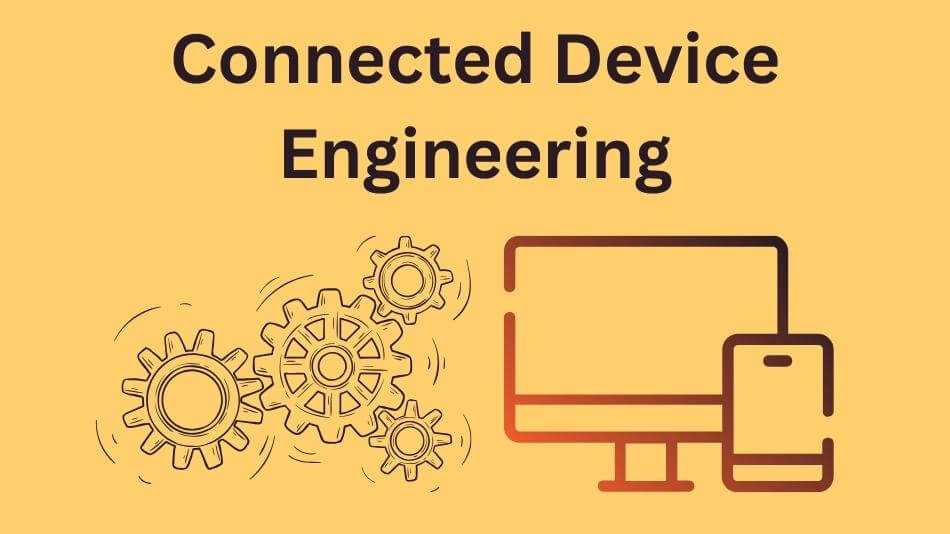Introduction

Technology is always progressing forward, and connected devices have emerged as a revolutionary breakthrough, connecting our physical worlds seamlessly.
At its heart is connected device engineering – driving smart homes, autonomous vehicles, and wearable technology, among many others.
In this article, we’ll cover some of its intricacies while answering common queries to understand this emerging field and all its vast possibilities.
Understanding Connected Device Engineering
What is Connected-Device Engineering?
Connected device engineering refers to the practice of designing, developing, and maintaining interconnected devices that communicate between themselves as well as with a central system.
Such devices typically incorporate sensors, software, and network connectivity capabilities for data collection and exchange.
How Does Connected Device Engineering Work?
At its core, connected-device engineering involves integrating hardware and software components.
Sensors collect data processed by the device’s software before being transmitted over wireless or wired networks back to a central system for analysis or storage for use by users or improved efficiency and safety measures.
Advancements in Connected Device Engineering
IoT and the Connected World
The Internet of Things (IoT) has revolutionized device engineering. Its introduction has led to an unprecedented explosion of smart home devices ranging from thermostats and voice assistants to smart thermostats and voice-activated assistants redefining our daily lives.
Industrial IoT (IIoT)
In the industrial sector, the Industrial Internet of Things (IIoT) is transforming manufacturing processes.
IIoT uses connected devices to optimize production, monitor equipment health, and reduce downtime through predictive maintenance.
Healthcare and Wearable Devices
Connected-device engineering plays a crucial role in healthcare. Wearable devices, such as fitness trackers and remote patient monitoring tools, enable healthcare professionals to gather real-time health data and provide better care.
Smart Cities
Smart city initiatives leverage connected devices to improve urban living. Smart traffic lights, waste management systems, and energy-efficient street lighting are examples of how connected-device engineering contributes to sustainability and quality of life in cities.
Challenges and Opportunities
Challenges in Connected Device Engineering
- Security Concerns: Ensuring the privacy and security of data transmitted by connected devices remains a significant challenge.
- Interoperability: The need for devices from different manufacturers to communicate seamlessly can be complex.
- Energy Efficiency: Many connected devices rely on batteries, posing challenges in extending battery life.
Opportunities in Connected Device Engineering
- Innovation: Constant advancements create opportunities for groundbreaking new applications and devices.
- Data Insights: The data collected from connected devices can offer valuable insights for businesses and individuals.
- Environmental Benefits: More efficient resource usage can help reduce environmental impacts.
Frequently Asked Questions

Q1: Are all smart devices considered part of the Internet of Things (IoT)?
No, not all smart devices are part of the IoT. While IoT devices are smart, not all are connected to the internet or can exchange data with other devices. IoT devices are specifically designed for interconnectedness.
Q2: How can I ensure the security of my connected devices?
Securing connected devices involves regular updates, strong passwords, and network security measures. It’s also crucial to research the security features of devices before purchase.
Q3: What is the role of artificial intelligence (AI) in connected device engineering?
AI is integral to connected-device engineering, enabling devices to learn from data, make decisions, and enhance user experiences.
For example, AI can optimize energy consumption in smart homes or predict machine failures in industrial settings.
Q4: Can connected devices be integrated into existing systems?
Yes, many connected devices are designed to be compatible with existing infrastructure, allowing for gradual integration without major overhauls.
Q5: What are the ethical considerations in connected-device engineering?
Ethical concerns include privacy, data security, and the responsible use of data collected by connected devices. Engineers and developers must address these issues to build trust with users.
Q6: How does 5G technology impact connected device engineering?
The rollout of 5G networks is a game-changer for connected-device engineering. It offers faster, more reliable connections, enabling devices to transmit and receive data with minimal latency.
This empowers a new wave of applications, from autonomous vehicles to augmented reality, where real-time communication is critical.
Q7: What role does edge computing play in connected device engineering?
Edge computing is becoming increasingly important in connected-device engineering. It involves processing data closer to the source (the “edge”) rather than relying on a distant data center.
This reduces latency and allows devices to make quick decisions, crucial for applications like autonomous vehicles and real-time industrial control.
Q8: How can individuals benefit from connected-device engineering daily?
Connected devices in daily life can enhance convenience, safety, and efficiency. For instance, smart thermostats can optimize energy usage and reduce utility bills, while smart home security systems provide peace of mind with real-time monitoring and alerts.
Q9: What industries are most affected by connected device engineering?
Connected-device engineering impacts various industries, including healthcare, agriculture, manufacturing, transportation, and energy.
These sectors benefit from increased automation, data-driven decision-making, and improved operational efficiency.
Q10: What’s the future of connected device engineering?
The future holds exciting possibilities for connected-device engineering. We anticipate more seamless integration, increased use of AI and machine learning, and a greater emphasis on sustainability. As technology evolves, our connected world will become smarter and more efficient.
Conclusion

Connected-device engineering holds great promise to revolutionize our daily lives and work, creating an ecosystem where devices connect and collaborate for our benefit.
Smart homes to industrial automation – there’s no end to what technology can achieve! As technology progresses, so will connected-device engineering – shaping a more connected and efficient future. Understanding its principles and applications is vital if you want to become involved.
Are you ready to explore the exciting world of connected device engineering?
In sum, connected device engineering stands at the forefront of technological development, providing numerous opportunities and benefits in our interconnected world.
From the Internet of Things (IoT) to smart cities, its applications are diverse and transformative.
As 5G networks, edge computing technologies, and artificial intelligence continue their rapid advancement, this field promises great things soon.
